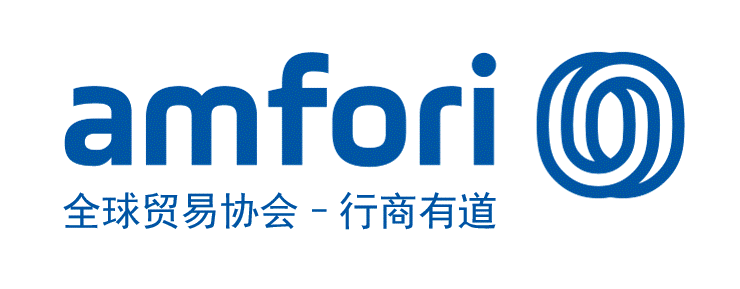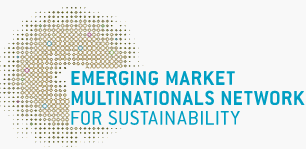Home > Knowledge > CSR Research >
【View】Maximising the Opportunities of TPP and Belt & Road
2016-03-24未知Mr Christian Ewert,0
Recently there has been a great deal of discussion about the potential for competition between two ‘mega-regional’ initiatives spearheaded by China and the United States respectively. I have heard many and differing views as to whether and how the Chinese land and maritime Silk Road initiative (collectively known as One Belt, One Road) counters the US led Trans-Pacific Partnership (TPP).
From the point of view of the apparel and fashion industries, both the TPP and the Silk Road (once they enter into force) will provide new and interesting opportunities for businesses, albeit of a different nature. At this point it is important to make a clear distinction between the two initiatives: the TPP aims to set rules on trade, investment, labour, environment and intellectual property rights among its 12 members in the Asia-Pacific region, while the Silk Road aims to develop economic connectivity for Asia, Europe and Africa through the construction of physical infrastructure for trade, energy and transport.
That being said, the two initiatives do not necessarily oppose each other: countries in the TPP could potentially also benefit from the Silk Road and vice versa. This would mean that certain countries, like Vietnam or Malaysia, could profit from the lowering of tariffs between TPP countries while at the same time developing their infrastructure to facilitate trade through investments from the Silk Road plan. In these circumstances, the benefits for businesses established in these countries would be tremendous.
Similarly, the potential effects of the two initiatives on the fashion and apparel industries will be large. TPP is expected to be highly beneficial for these industries in Vietnam. Considering that Vietnam is the third most important emerging-market apparel supplier, while the US is the largest consumer of apparel in the world, the potential benefits for the fashion and apparel industries are substantial. I expect that companies from China and Hong Kong will also be enticed by the opportunities arising from TPP and consider investing in the fashion and apparel sectors in the participating countries in order to make best use of the market openings that TPP provides.
On the other hand, it is also anticipated that the TPP might result in trade diversion of textiles business to Vietnam (as well as to potential future members of the TPP such as Indonesia or the Philippines) from non-participating countries like China, Bangladesh, Pakistan and Sri Lanka, but this is where the Silk Road could come in to even-out the potential negative effects. For example, the European Union already imports 40% of its clothing from China, and a better trading infrastructure between China and Europe will provide better market access for Chinese producers due to the lowering of transport costs. Similarly, another country which has been announced as a priority for financing projects under the Silk Road is Pakistan, which is also an important player in the textile industry. Due to the expected investments in energy, port and road infrastructure in the country, we can presume that Pakistan will be able to cut production and transport costs and facilitate trade, and in this way it would also become more attractive to foreign investors such as those from China and Hong Kong.
To conclude, I firmly believe that both the Silk Road and TPP open up opportunities for businesses to cut costs, increase productivity or reach new markets; and although the two initiatives seem to oppose each other on the geopolitical front, they provide a unique opportunity for creating economic synergies stretching from Europe to the Pacific. The retail and fashion sectors see great potential arising from these two projects. And I call for the parties not to raise trade barriers to non-participating states, since only in this way can we ensure that the economic impacts of the initiatives will be significant. This could eventually lead to consolidation of interests at the global level between these ‘mega-regional’ projects, and help cut barriers to trade at the multilateral level and give the fresh impetus needed to the World Trade Organization.
By Christian Ewert (FTA Director General)
The Foreign Trade Association (FTA) is the leading business association of European and international commerce that promotes the values of free trade. We represent over 1700 retailers, importers, brands and national associations to improve the political and legal framework for trade in a sustainable way. The combined turnover of the membership is approximately €800 billion.
From the point of view of the apparel and fashion industries, both the TPP and the Silk Road (once they enter into force) will provide new and interesting opportunities for businesses, albeit of a different nature. At this point it is important to make a clear distinction between the two initiatives: the TPP aims to set rules on trade, investment, labour, environment and intellectual property rights among its 12 members in the Asia-Pacific region, while the Silk Road aims to develop economic connectivity for Asia, Europe and Africa through the construction of physical infrastructure for trade, energy and transport.
That being said, the two initiatives do not necessarily oppose each other: countries in the TPP could potentially also benefit from the Silk Road and vice versa. This would mean that certain countries, like Vietnam or Malaysia, could profit from the lowering of tariffs between TPP countries while at the same time developing their infrastructure to facilitate trade through investments from the Silk Road plan. In these circumstances, the benefits for businesses established in these countries would be tremendous.
Similarly, the potential effects of the two initiatives on the fashion and apparel industries will be large. TPP is expected to be highly beneficial for these industries in Vietnam. Considering that Vietnam is the third most important emerging-market apparel supplier, while the US is the largest consumer of apparel in the world, the potential benefits for the fashion and apparel industries are substantial. I expect that companies from China and Hong Kong will also be enticed by the opportunities arising from TPP and consider investing in the fashion and apparel sectors in the participating countries in order to make best use of the market openings that TPP provides.
On the other hand, it is also anticipated that the TPP might result in trade diversion of textiles business to Vietnam (as well as to potential future members of the TPP such as Indonesia or the Philippines) from non-participating countries like China, Bangladesh, Pakistan and Sri Lanka, but this is where the Silk Road could come in to even-out the potential negative effects. For example, the European Union already imports 40% of its clothing from China, and a better trading infrastructure between China and Europe will provide better market access for Chinese producers due to the lowering of transport costs. Similarly, another country which has been announced as a priority for financing projects under the Silk Road is Pakistan, which is also an important player in the textile industry. Due to the expected investments in energy, port and road infrastructure in the country, we can presume that Pakistan will be able to cut production and transport costs and facilitate trade, and in this way it would also become more attractive to foreign investors such as those from China and Hong Kong.
To conclude, I firmly believe that both the Silk Road and TPP open up opportunities for businesses to cut costs, increase productivity or reach new markets; and although the two initiatives seem to oppose each other on the geopolitical front, they provide a unique opportunity for creating economic synergies stretching from Europe to the Pacific. The retail and fashion sectors see great potential arising from these two projects. And I call for the parties not to raise trade barriers to non-participating states, since only in this way can we ensure that the economic impacts of the initiatives will be significant. This could eventually lead to consolidation of interests at the global level between these ‘mega-regional’ projects, and help cut barriers to trade at the multilateral level and give the fresh impetus needed to the World Trade Organization.
By Christian Ewert (FTA Director General)
The Foreign Trade Association (FTA) is the leading business association of European and international commerce that promotes the values of free trade. We represent over 1700 retailers, importers, brands and national associations to improve the political and legal framework for trade in a sustainable way. The combined turnover of the membership is approximately €800 billion.
Best Practices
- The 100-year brand — Air Liquide also has a sense of juvenile
- Beijing Public Transportation Corporation: Developing green transportation to build a harmonious and livable capital
- CGN: Building a modern factory in barren deserts and developing a new win-win cooperation model along “Belt and Road”
Upcoming Event

All the materials on the site “Source: XXX (not from this site)” have been reprinted from other media. They do not imply the agreement by the site.
All the materials with “Source: CSR-China Website” are the copyright of CSR-China Website. None of them may be used in any form or by any means without permission from CSR-China Website.
GoldenBee Official WeChat
Copyright © Csr-china.net All Right Reserved.
京ICP备19010813号










